News and Events
Latest News
World Spine Day 2016
October 16 is World Spine Day. It’s an initiative of the Global Alliance for Musculoskeletal Health (formerly Bone and Joint Decade) that is coordinated each year by the World Federation of Chiropractic (WFC). This year the theme is again “Straighten Up and Move” which accords with evidence supporting optimum care for spinal disorders and the World Health Organization’s focus on physical activity as a way to combat a range of health disorders including cardiovascular disease, obesity and, of course, musculoskeletal disorders.On this day people from around the world join together to raise awareness about spinal disorders. Millions of people in all continents of the world suffer with spinal disorders. These can include low back pain, neck pain, scoliosis and disc disease, to name but a few. Spinal pain and disability can have a profound effect on a person’s overall health, sometimes preventing them from working or even doing simple daily activities.
Research has demonstrated that poor posture and inactivity are major contributors to the development of back pain and other spinal disorders. According to the World Health Organization, one in four adults is not active enough and over 80% of the adolescent population is not active enough.
The World Spine Day (WSD) theme of “Straighten Up and Move” wants to highlight the importance of physical activity and improving posture as part of good spinal health and prevention of injury. It emphasizes the importance of healthy spinal posture and activity which promotes body awareness and minimizes the day-to-day wear and tear on a person’s spine. The theme of posture and movement supports the Bone & Joint Decade’s Vision of “Keep People Moving”. The intent of WSD is to bring people from all walks of life – patients, health providers, health care organizations, associations and governments to help ease this global burden of spinal disorders.
The “Straighten Up and Move” programme consists of a series of simple exercises and lifestyle recommendations taking just minutes each day to complete, Straighten Up and Move modules promote the improvement of posture and body core stabilization to help in the prevention of spinal conditions. They are easy and fun and can be completed quickly as a regular day-to-day preventative health practice. The 2-3 minute routines can help improve and prevent poor posture, which is a common trigger for general back and neck pain and can be undertaken by all ages. It is designed to empower people everywhere toward better spinal health and an improved quality of life. It also is meant to serve as an incentive and inspiration to take up a sporting activity like for example yoga, Pilatus or Qi Gong. These are some of the type of exercises that can strengthen your back and make you flexible.
This year the Namibian Chiropractic Association has joined forces with Yoga, Pilatus and Qi Gong teachers to get Namibian’s moving. On Saturday, 15th October 2016 at 9:00 am a free Yoga/Pilatus class combination will be given at The Village in Liliencron street, Windhoek. The warm up for the class will be the Straighten Up Namibia exercises and then two experienced yoga and Pilatus instructors will guide you towards stretching and strengthening the core, back and hips. Don’t miss this unique opportunity to do become inspired to do something for your back and health in general.
Visit the following webpages for more information www.namibianchiropractic.org and www.risenamibia.com.na
As well as the Namibian Chiropractic Association and Rise Namibia facebook pages for more information and to sign up.
In addition we also teamed up with Guenther Maartens, a QiGong instructor who gives regular morning classes at Parliament Gardens. We will be presenting the Straighten Up exercises before each session during next week. Sessions are held Monday, Wednesday and Friday from 7:45 till 8:30.
If you, your school, club or company are interested in learning more about the Straighten Up exercises, proper posture, work ergonomics and maintaining spinal health, please contact the Namibian Chiropractic Association at elga.drews@iway.na to arrange a presentation by one of our chiropractors.
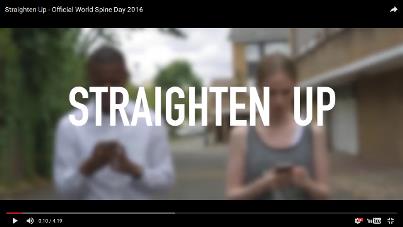
Around the World
Namibia
ACF Congress Advances Sports Chiropractic in Africa
By Dr Brian NookThe Third African Chiropractic Federation (ACF) Congress held in Windhoek, Namibia 3-4 June, 2016 was a truly historic event for sports chiropractic. In the presence of chiropractors from across Africa, including Botswana, Congo, Kenya, Namibia, South Africa, Uganda, Zambia and Zimbabwe:
- The Congress was opened by the Deputy Minister of National Service, Youth, Sport and Culture Ms Agnes Tjongarero who spoke of the importance of “including chiropractic services in the medical support team for our athletes…at all levels”. “I am here today,” she said, “to demonstrate the support of our Ministry.”
- The Secretary General and Press Relations Officer of the Namibian Boxing Federation attended the whole Congress, together with several Olympian boxers who volunteered and were assessed and treated as demonstration patients. This led to the Secretary General insisting that all NBF boxers will see sports chiropractors in the future, and all of the athletes that attended were then scheduled with local chiropractors.
- A marathon runner who had already qualified for the Rio Olympics attended for us - Dr Simon Lawson, President of Chiro Sport South Africa and me - to evaluate as part of the program. She and her coach were very appreciative, and she is continuing to be treated by a local chiropractor.
- A Namibian paralympian swimmer Gideon Nasilowski also attended for evaluation and treatment by Simon and me. As reported by Dr Richard Brown, WFC Secretary General on Facebook: “This is Gideon 'the Amphibian Namibian' Nasilowski, with Brian Nook and Simon Lawson here at the ACF Congress. Gideon and his twin brother were both born with Artholiposis Multicomplex Congenita, a disabling condition that causes widespread joint fibrosis and locking. Despite being told he would never even walk he now competes internationally for Namibia and is confident of making it to the Rio 2016 Paralympic Games to complete in the S3 class 50m Freestyle. Today he had his first experience of chiropractic assessment and adjustment and was hugely impressed by the immediate functional improvement. He now plans to integrate chiropractic into his health and fitness regime and wants it to be available for all Namibian Paralympians”.
- After an outstanding program the Congress formally concluded with remarks from the Vice President of the Namibian Olympic Commission, Adv. Jesse Schickerling, who said: "I can see from this Congress how chiropractic has huge potential to make a contribution to sport". He invited the sports chiropractors in Namibia to present a proposal for further cooperation to the Namibian Olympic Committee, and mentioned that his niece had recently qualified as a chiropractor in South Africa.
- Keynote speakers, Dr Brian Nook and Dr Simon Lawson, inspired all present with their lectures and practical sessions.
- Other speakers included Dr Richard Brown, who spoke of his sports chiropractic practice and experience during 27 years in practice, including participation in the host medical services at the 2012 London Olympics.
read more
Madrid Students Bring Relief In Namibian Outreach Trip
By Elga Drews, President, African Chiropractic FederationEach year, Madrid College of Chiropractic, during the clinical training provides a limited amount of credits to the students who voluntarily provide humanitarian chiropractic services to the people that otherwise would barely have access to any type of healthcare. During the academic year all the graduating classes get exposed to patients on a Caritas shelter home for refugees, immigrants and homeless in the heart of Madrid. And as the year comes to an end the ones who can afford come on a Mission trip abroad supported by the college, where they will have a life-changing experience. The first four cohorts have visited the Manaus in Brazil twice, Nepal and Peru. This time the choice was made easy by coming to Namibia. In 2015 during a visit to the Madrid College of Chiropractic in El Escorial we started discussing the possibility of collaborating when planning a mission trip for their next graduating class and soon it became clear that Namibia would be an ideal destination. The Minister of Health and Social Services in Namibia had called upon the private sector in the country to do outreach programmes into areas with a lack of services, so a mission trip of this kind fitted into this frame work perfectly. The Kavango and Zambezi regions in Namibia are two of the economically poorest regions despite their natural beauty. We chose the Kavango region for this mission trip mainly due to the dire need for health care and ease of accessibility. I have found over the years of dealing with various authorities that it is most advisable to organize and handle certain events in collaboration with other existing foundations and projects, so I contacted the Theresia Foundation and Komeho project to assist us with logistics and premises to deliver our voluntary services. When the 7 new graduates from Spain, France and Mexico, and the supervising clinician, Dr Carlos Gevers, finally touched down on Namibian soil on the 13th of June this year, excitement was great all around. An eight-hour car trip took us to our desired destination close to Rundu. Arriving in Kaisosi village, just 9km east of Rundu, on the first morning of the mission left us flabbergasted at the view of the turnout of patients. And the following 3 days in various locations had the same resonance. All in all the 7 graduates saw and treated close to 1200 patients in 4 days working from 8 till 5 or even later. There was magic in the air particularly at Mawanze village. We had 5 locals helping us with filling in the take-in forms for each patient and translating during treatments. Without their help it would have been extremely difficult and downright impossible to communicate and the mission would not have been half as successful. The challenges the people face in this area on a daily basis just for plain survival none of us will ever be able to comprehend. Most people that we saw do not have means to provide for 3 meals a day, let alone healthy balanced meals and least of all pay for any health care services. Although there are rural health care clinics these require a 5-15km walk or the need to arrange some sort of alternative transport. As was evident from the “medical passports” care given in these clinics, as well as a government funded hospital in the near-by town, was extremely limited to the prescription of Ibubrofen for whatever condition or complaint the patients presented with. As a high percentage of patients seen have had TB and also malaria in the past, immunity is in any case compromised, but adding the relatively high rate of HIV infected individuals just makes the whole scenario worse. The conditions seen and complaints presented were often heart-wrenching and more often than not we knew that just the fact that we took the time to listen to them, showed compassion and touched them was all we could do for them.
read more
World Spine Day
Since 2007 the international community has been celebrating World Spine Day every 16th of October. This day was announced by the Bone & Joint Decade and the World Health Organisation. The aim is to create awareness of the vast extent of suffering caused by spine-related disorders and the consequential disabilities. Globally chiropractic associations and their member chiropractors have made it their mission to call attention to the importance of looking after the back and the spine for optimal health. A specific exercise programme was developed to maintain flexibility and strengthen postural muscle groups. It is intended that this exercise programme is incorporated into a daily routine by young and old in order to avoid spinal illness.
The Namibian Chiropractic Association has put together a presentation explaining the basic biomechanics of the spine, office and home ergonomics, tips on how to sit, sleep and carry and the Straighten-Up exercise programme. Should you, your school, company, club etc. be interested in this presentation, you are invited to contact us for a demonstration.
We invite all to join us and have fun with the Straighten Up exercise routine! Download and follow the simple programme as illustrated.
Click here to download the exercise programme.
For queries, please contact the Namibian Chiropractic Association.
Bone and Joint Decade Action Week
Introduction to the Bone and Joint Decade Action Week
From 1990 till the year 2000 the Brain Decade was successful in creating raised awareness about the impact of brain disorders and also made significant contributions to scientific research in this field. As a consequence the WHO and other related stakeholders declared the next decade from 2000-2010 the Bone and Joint Decade.
The reason for this was mainly that musculo-skeletal conditions are the most common causes of severe long-term pain and physical disability, affecting millions of people across the world. The extent of the problem and its burden on patients and society can be understood when we take a brief look at the following statistics:
- Joint diseases account for half of all chronic conditions in persons aged 65 and over.
- Back pain is the second leading cause of sick leave.
- Fractures related to osteoporosis have almost doubled in number in the last decade; it is estimated that 40% of all women over 50 years will suffer from an osteoporotic fracture.
- The severe injuries caused by traffic accidents and war produce a tremendous demand for preventive and restorative help. It was anticipated that 25% of health expenditure of developing countries would be spent on trauma related care by the year 2010.
- Crippling diseases and deformities continue to deprive children of their normal development.
Many organizations world-wide joined the efforts of raising awareness about bone and joint health, developing various activities and information platforms to reach people globally. In a joint effort the following focus days were declared:
12th October- World Arthritis Day
16th October- World Spine Day
17th October- World Trauma Day
19th October- World Paediatric Bone and Joint Day
20th October- World Osteoporosis Day
From tomorrow onwards we will bring you daily tips relevant to these topics.
World Arthritis Day 12th October
The topic for World Arthritis Day 2013 was healthy ageing for people with rheumatic and musculoskeletal diseases (RMDs). It covered the physical and mental changes that occur as part of the ageing process from birth throughout our lifespan, as well as all the other factors that affect our ability to enjoy an optimal quality of life, including access to buildings, transport, technologies, medicines and treatments; societal attitudes; the lifestyle choices we make, and more. You can find a lot of information on www.worldarthritisday.org under WAD Activities and Healthy Living features.
The number one secret is to remain active. Therefore the theme in the United States for WAD is “Move to Improve”. There are 7 main activities people suffering from any rheumatic or musculoskeletal condition can do to remain physically active:
- Swimming and water exercise
- Cycling
- Walking
- Home gym (simple exercises on the mat, or with light dumbells or exercise home trainer)
- Tai Chi, Qigong, Yoga or Pilates
- Housework and gardening
- Dancing
Have a look at the Guide to physical activity and exercise with essential information and expert advice.
Please always talk to your health care provider, chiropractor, doctor or physiotherapist before you start any new form of exercise. If you have never taken an exercise class, it is important that you learn to use the correct techniques from a qualified instructor.
Obviously other lifestyle changes like a healthy diet and taking good supplements can also assist in improving the quality of life if you suffer from any arthritic or musculoskeletal condition.
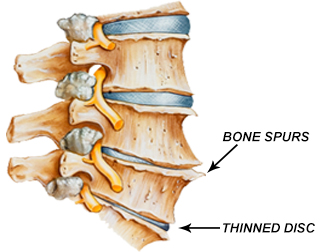
World Spine Day, 16th October
Since 2007 the international community has been celebrating World Spine Day every 16th of October. This day was announced by the Bone & Joint Decade and the World Health Organization. The aim is to create awareness of the vast extent of suffering caused by spine-related disorders and the consequential disabilities. Globally chiropractic associations and their member chiropractors have made it their mission to call attention to the importance of looking after the back and the spine for optimal health.
As it is exam and test time for most scholars and students I think it would be a good idea to give you some tips on how to sit correctly and how to look after your back while studying and writing. One of the most common forms of poor posture is sitting in a slouched position with rounded shoulders and the neck protruding forward, this results in a “C” shaped curve of the entire spine, reversing all the natural curves and putting a great deal of stress on the joints, discs, ligaments and muscles. In order to avoid this take note of the following tips.
Tips for correct sitting posture:
- Pull your chair close in to the desk so that you are sitting upright. Don’t perch on the edge of the chair and don’t slouch.
- Rest your back against the back of the chair if the back is upright and supports the lumbar spine curvature or lean slightly forward.
- Choose a chair with a good back support or ask your Chiropractor for a lumbar support cushion.
- Alternatively a kneeling chair or big gym ball can be used to sit on and maintain an upright posture.
- Your chair should be high enough for your forearms to rest on the desk with your elbows bent 90 degrees and your shoulders relaxed. Don’t pull your shoulders up.
- Rest your arms on the desk, moving your forearms to type or write.
- Ensure that both feet touch the ground. If the chair is too high put a block under both feet.
- Knees must be level with the hips or tucked in under the seat.
- Take regular breaks, at least every 20 minutes.
- Another good position to study in would be lying on your tummy.
- Again regular breaks are necessary and you might want to alternate between lying on your stomach and sitting upright at your desk.
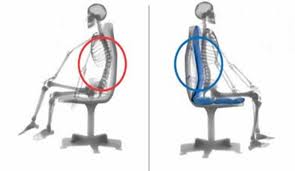
Tips for working at the computer:
- Assume the correct sitting posture. Legs must be able to go under the desk. If the chair is too high place a block underneath your feet so that your legs are comfortably relaxed.
- Pull your chair far enough forward so that you have to sit upright. Ensure that your chair has a good back support or ask your Chiropractor for a lumbar support cushion.
- Make sure that the screen is right in front of you and not at an angle, or on your side.
- Your computer screen should be 40-70 cm away from your eyes and the top of the screen should be above eyebrow level.
- Adjust the monitor angle and height so that you are looking straight forward with neck and shoulders relaxed.
- Documents being typed from should be placed on a clipboard or recipe stand just behind the keyboard so that you do not have to turn your neck while typing.
- Move the keyboard to the side slightly so that the mouse is in front of the shoulder.
- Ensure that the forearms are relaxed and resting comfortably on the desk. The keyboard must be pushed back so that the forearm can rest on the desk thereby relaxing the upper back and neck.
- Elbows should be at 90 degrees. If the desk is too narrow to allow the keyboard to be pushed back, then get a chair with armrests and apply the same 90 degree principle.
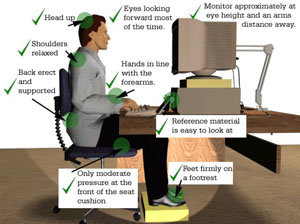
Did you know that you spent about a third of your life sleeping? So wouldn’t it be wise to also assume a good sleeping posture? Here are some tips of how to protect your back and spine from strain while you are sleeping.
Tips for comfortable sleeping:
- Proper sleeping posture is lying on your side with your knees slightly bent. Place a pillow between your knees to take pressure off your lower back and to prevent it from twisting. Place a pillow under your neck, but ensure that it is not too high. Your head and the rest of your spine should be in line with one another.
- If lying on your back, place a pillow under the knees to reduce tension in the lower back. Support your neck with a small but firm pillow under the curve of the neck.
- Avoid lying in the foetal position with head tucked in and knees curled up, which reverses your lower back and neck curves and increases spinal stress.
- Never sleep on your stomach, this position is the worst as it puts stress on your neck, mid-back and hips.
Rules to live by to avoid back pain:
- Pain is a warning sign, don’t ignore it! Don’t persist in taking pain-relieving medication.
- Avoid soft chairs and deep couches. Try to choose a chair with a backrest.
- Do not sit for prolonged periods, as this increases the pressure in the intervertebral discs.
- Sleep on a good quality, supportive mattress. Sleep on your side or back, never on your tummy.
- When getting up from bed, roll onto your side first, swing your legs off the bed and then push up with your arms.
- Try not to stay in bed for prolonged periods, as continuous bed rest can lead to slower recovery. Move frequently to maintain mobility.
- Don’t cough or sneeze in a bent position.
- Bend with knees and hips not with the back when picking something up, never bend and twist at the same time as this increases the pressure in the discs. Turn to face the object you wish to lift.
- Hold heavy objects close to the body.
- Avoid sudden movements – learn to move deliberately.
- Do not use heat in the early acute stage of inflammation, this may give temporary relief but may prolong recovery.
- When in pain, stop all sport including swimming.
- Do not delay treatment. Early arthritic changes can take place rapidly in an injured or immobilized joint.
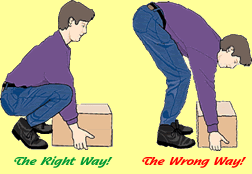
More rules to live by to avoid neck, shoulder and arm problems
- Improve your posture by sitting and standing as straight as possible
- Don’t slump in armchairs
- Adjust the seat of your car properly
- Climb up rather than reach up
- Avoid cold drafts and air conditioners
- Don’t work too long in one position – take a break
- Exercise, but with proper precautions
- Sleep with one good supportive pillow
Consult a qualified Chiropractor as soon as possible for an examination and appropriate treatment and advice in case of pain.
The World Spine Day theme is“Straighten Up and Move”. The above postural tips to maintain spinal health are as vitally important as exercising properly. The Straighten Up exercise programme is a specific exercise programme which was developed to maintain flexibility and strengthen postural muscle groups. It is intended that this exercise programme is incorporated into a daily routine by young and old in order to avoid spinal illness. When we maintain a good posture the spine and body are in balance. However, due to daily work stresses and bad postural habits the back is put under unnecessary strain. Certain postures or positions on their own or in repetition can put increased stress and strain on the spine and potentially contribute to injury. This leads to the overload of muscles and increased strain on the spine itself, resulting in spinal subluxations, muscle spasm, pain and inflammation, and ultimately more serious conditions like disc herniation.
Spinal disorders, such as back pain, neck pain, scoliosis and disc disease, to name a few, are common, and they can have a profound effect on a person’s overall health, impacting a person’s ability to work, to enjoy everyday activity and even disrupting healthy sleep patterns.
Some facts:
- 80% of people (recent research has shown that it is more) will suffer from back or neck pain some time in their lives.
- 50% of the working population will experience back or neck pain symptoms at least once per year.
- Activities such as collecting water and farming can increase the risk of spinal pain.
- Age is one of the most common risk factors for spinal pain, and the greatest effects of population ageing are predicted in low- and middle income countries.
- Back and neck pain is one of the most common reasons for workplace sick leave.
World Spine Day focuses on the importance of positive posture and movement at home, work and play as a preventative strategy aimed at promoting spinal health and preventing spinal disorders. The Straighten Up exercises help to counteract postural strain. For your free copy of the exercise routine click here to download.
Another form of exercise that has become very important in our sedentary lifestyle is walking. As part of the Straighten Up and Move theme I would like to advise you to plan in a little walk every day. Even 15 minutes of getting out and walking are enough to move the joints and also clear the head and fill the lungs and body with fresh air. Walking (and of course most other form of exercise) has many health benefits from keeping joints movable, to muscles active, to lungs filled with fresh air, to the heart and circulatory system pumping and even the digestive system is stimulated.
We invite you all to join us and have fun with the Straighten Up exercise routine!
World Trauma Day, 17th October
On World Trauma Day we would like to call attention to safety on our roads. According to the WHO trauma is a leading cause of death and disability around the world. The only tips we have for you in order to avoid accidents and the consequential injuries, is to:
- Drive carefully,
- always be aware of the other drivers on the road and their potential moves and reactions.
- Look out for pedestrians, cyclists and motor cycles!
- Adhere to the basic traffic rules.
- Make sure you take rests on long journeys, so you don’t fall asleep.
- Ensure your car is in good condition i.e. the breaks are working, the suspension is good, the wheels have been balanced and aligned properly etc.
Injuries also occur in sporting activities. In order to avoid injuries and trauma here:
- Make sure you warm up sufficiently before training and a game or race
- Ensure your level of fitness and ability is in line with the challenge you are facing
- Know your limits
- Adhere to safety rules and rules of the game
- Stretch after training, games and races
- Don’t use broken equipment
- Children should only use gym equipment with the supervision of an adult
Injuries at the workplace
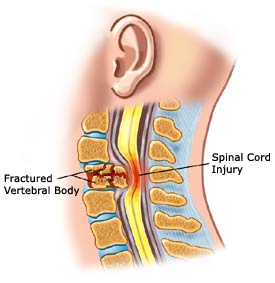
World Paediatric Bone and Joint Day, 19th October
World Paediatric Bone and Joint Day highlights the impact of musculoskeletal conditions on children. 48% of adults have a musculoskeletal condition, many of which began in childhood. Children represent about 10% of the population with a disabling musculoskeletal conditions. Various themes are introduced yearly to spotlight different areas of concern in the bone and joint health of children. In 2013 the focus was on vit D deficiency and the consequential bone weakness and fragility, as well as obesity and its impact on bone and joint health in children. In 2014 special attention was paid to concussion, a mild traumatic injury of the brain, particularly as a common consequence to a head injury in contact sports. The effect of concussion on developing brains is a particular concern. Children who have suffered from concussion, especially multiple concussions are at high risk of developing headaches, suffering from impaired memory, cognitive function, attention and other behavioral changes. So part of preventive measures is to promote awareness of safe sport practices. A comprehensive outreach programme focuses on the importance of sports safety, specifically referring to overuse and trauma injuries. Play smart and safe, as this enhances and extends a child’s athletic career, improves team work, reduces obesity and creates a lifelong love for exercise and healthy physical activity.
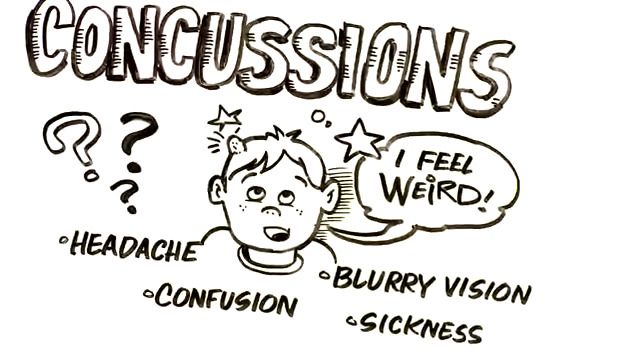
World Osteoporosis Day, 20th October
On World Osteoporosis Day the International Osteoporosis Foundation aims at raising global awareness of the prevention, diagnosis and treatment of osteoporosis and metabolic bone disease. Since 1999 they have had various campaigns under different themes like: early detection, building bone health, bone development in youth, osteoporosis in men, nutrition etc…..In 2014 the theme was “Wear white and embrace better bone health”.
OP is a disease which gradually weakens bones leading to painful fragility fractures. These can occur due to minor falls, but even just from bumps or sneezing! Most commonly the hip and vertebral bones are involved. Typically it was believed that predominantly women suffer from this due to the decrease in Oestrogen after menopause. However the latest statistics indicate that 1 in 5 men over 50 will break a bone due to osteoporosis. Men are twice as likely to die following a hip fracture than women, men are more likely to develop OP than prostate cancer, and 1/3 of all hip fractures occur in men. Problem is that the vast majority of neither identified nor treated for this “silent” disease. Although men do not lose bone mass as rapidly as women after the age of 50, by age 70 bone mass loss is equal in men and women and the absorption of calcium decreases in both.
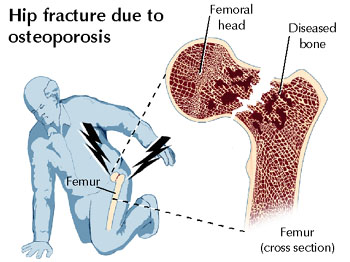
Major risk factors:
- Age
- Family history
- Previous fracture at age 50 or over
- Long term use of corticosteroids
- Hormonal deficiencies (oestrogen in women, testosterone in men)
- Certain medications
- Other chronic conditions
- Lifestyle related factors like smoking, excessive alcohol intake, lack of regular exercise or excessive physical exercise, poor nutrition, vit D deficiency, low body mass index.
People are encouraged to test their bone density. Then to prevent the first fracture by knowing the risk factors. And finally to get properly informed.
5 Steps to better bone health:
- Regular exercise
- Bone healthy nutrients
- Avoid negative lifestyle habits
- Identify your risk factors
- Take appropriate op medication if prescribed
You can ckeck out www.worldosteoporosisday.org for a lot of pertinent information allowing you to take responsibility for your health.